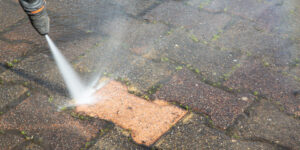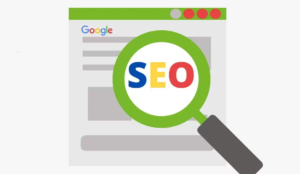When dirt, mildew, moss and other substances are left to grow on your building, they can eat away at surfaces and cause damage. Routine cleaning with a pressure washer prevents this damage and saves money in the long run.

Cleaning exterior surfaces also improves the health of people in your building, as mold and mildew are known irritants for those with asthma and allergies. Visit https://www.certifiedsoftwash.ca/ to learn more.
The exterior of your home or business is the first thing that people notice, and a dirty looking property can turn potential customers away. Regularly pressure washing your home or commercial building can help keep it looking new and attractive, adding to its curb appeal and attracting more customers.
When dirt and grime build up on the exterior of your home, it makes the paint look dull and worn out, lowering its curb appeal. It can also be difficult to scrub these deposits off with traditional cleaning methods, but with pressure washing, it is quick and easy. A professional will be able to get rid of even the most stubborn dirt buildup in no time at all, giving your house a fresh new appearance that will make it look brand new.
Pressure washing also gives you a chance to inspect the exterior of your home for damage that may be hiding underneath dirt or mildew. When you wash the soffits, window trim, exhaust seals, and other out of the way areas, you can catch problems such as rotting wood or cracking vinyl siding before they become major issues that require expensive repairs.
If you are planning on painting your house or doing any other type of exterior renovations, a good pressure washing before the job starts is a great idea. This will remove all of the dirt and mildew that will prevent the new coat of paint or stain from adhering properly, saving you a lot of money in the long run.
Whether you are planning on selling your house or just want to improve its overall look, curb appeal is important. If you have a clean and inviting exterior, potential buyers will be more likely to stop by and take a closer look, making it easier to sell or rent your property.
In addition to regular pressure washing, it is also a good idea to plant and maintain healthy landscaping around your house or commercial building. This will not only increase the aesthetic value of your property, but it can also lower the temperature in your home and protect against mold and mildew growth.
Remove Stains
Pressure washing is a great way to clean off mildew, mold, dirt buildup and stains. It’s also a fast and satisfying DIY project. But be careful when using a power washer because if you’re not familiar with how it works, it can damage surfaces if used incorrectly. The key is finding the right PSI (pounds per square inch) setting and balancing it with the GPM (gallons per minute).
Power washing uses pressurized water to remove loose paint, mold, grime, dirt, dust, chewing gum, algae, oil stains and more. The process can be used to clean buildings, fences, decks and patios as well as some vehicles and concrete or asphalt surfaces.
When used with a detergent mix, a pressure washer is a powerful stain remover. It can lift stains from aluminum siding, Trex or wood decks, brick paths or patios and more. It’s important to keep in mind that you should always start with low pressure and gradually increase it (bringing the nozzle closer or changing nozzles) to prevent damage. You should also be mindful of where you’re placing the hoses and power cords to avoid kinking or creating tripping hazards.
The forceful stream of water also contains kinetic energy, which helps break the bonds between the surface and unwanted substances. This, along with the turbulence created when the water hits the surface, helps to detach and remove them from your property. The high temperatures of the water can also help dissolve grease and oils, making them easier to remove.
Aside from removing stains, power washing can also remove graffiti and other types of surface deterioration. It can even get rid of stubborn moss and black spots.
It can be difficult to clean tough-to-remove stains and streaks with traditional cleaning methods alone, but the combination of hot water, pressure washing and soap chemicals can work wonders. If you want to revitalize your home and increase its curb appeal, consider hiring a professional for some advanced pressure washing. They will know the right PSI, water rotation and cleaning products to use for each surface and can tackle even the most stubborn of stains.
Eliminate Moss
Moss is a common problem for many home and business owners, particularly on the roof, house walls, patio pavers and other concrete surfaces. It thrives in damp environments and can be very difficult to remove with scraping or chemical treatments. Power washing is a much more effective solution. The blast of water at high pressures (up to 4,000 psi) can dislodge the moss layer and kill the spores, making it impossible for them to return.
Using a professional pressure washer that is properly adjusted for surface materials is the best way to ensure that your property is not damaged during the cleaning process. A professional can adjust the psi of the water spray to suit delicate surfaces like wood, and hard ones such as concrete, ensuring that nothing is compromised.
If you are looking for a more environmentally friendly option, try using a mixture of white vinegar and water to remove moss. This can be mixed into a spray bottle and applied to the affected areas. The vinegar will work to dissolve the moss and kill it, while also helping to remove other unsightly marks on the surface. Alternatively, you could use a commercial moss killer that contains chemicals such as ferrous sulfate to kill the moss and prevent it from coming back.
Be aware that while these types of products are generally safe to use on paved outdoor surfaces, they can be very damaging when sprayed on grassy or other plant materials. Always test any type of chemical product on an inconspicuous area of the surface before applying it.
Removing moss from the exterior of your home or business can increase its value and curb appeal, while protecting it from rot, insect infestations and other damage. In addition, preventing the spread of moss can extend the lifespan of your roofing and other building materials. Professionals can provide expert advice on the appropriate methods of cleaning and recommend any products that may be necessary. Choosing the right cleaners, pressure settings and water rotation is vital for a successful outcome. Inexperienced pressure washing can lead to the premature aging of your building materials or even damage the structural integrity of your home, leading to expensive repairs.
Get Rid of Spiders
Many homeowners struggle with spiders that build webs on their home’s exterior. These pests can be very dangerous and bite if they come into your home. To help deter spiders, regularly clearing away their hiding places and spraying them with lemon juice can be helpful. However, a more permanent solution is to have your home pressure washed. Pressure washing removes the dirt, dust, cobwebs and spider webs that can attract these pests. It can also remove mildew and mold that may be growing on the side of your house.
When these materials are removed from the side of your house, it can help deter bugs and spiders as they don’t like to live in these dark areas. Regularly cleaning your property will also make it less appealing to these pests as they will be exposed to brighter, cleaner surfaces.
For those who are a little apprehensive about using a power washer on their home, it is recommended that you start in an inconspicuous area and slowly increase your pressure (such as by bringing the nozzle closer or changing nozzles). It is important to be cautious as a high-pressure washer can damage some materials and it is always better to be safe than sorry. For example, you should never blast a brick surface with a pressure washer because this can cause it to crack or chip.
Other steps you can take to help deter spiders include de-cluttering your home and regularly sweeping the areas where they tend to hang out. This can make them feel unwelcome and encourage them to move on to another place to hide. Using essential oils like peppermint, eucalyptus, or cedar can also help as they produce a natural odor that repels pests.
Having your home or business regularly cleaned by a professional pressure washing service is a great way to keep it looking its best and deter unwanted guests like spiders and other pests. Contact us today to get started with a free estimate. We can provide you with a quote that will be customized to your needs, whether it’s for your residential home, commercial building, or apartment complex.







